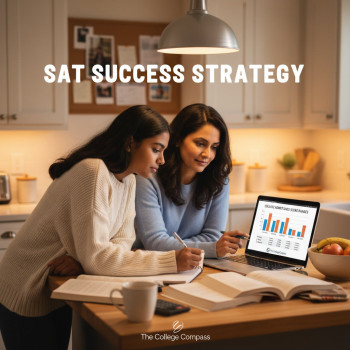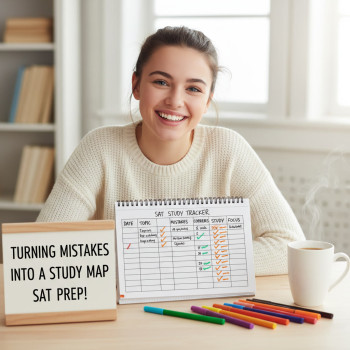Introduction — Why this matters for you (and your family)
Applying to the American University of Beirut is an exciting milestone. For many students and parents—especially those coming from international curricula or U.S.-style high schools—questions about testing often loom large. Do I need to take the SAT? Will my score decide admission or scholarships? How should I prepare if I plan to submit scores?
This guide walks you through AUB’s current approach to the SAT, what that means in practice, and realistic, actionable strategies to make your application shine. It’s written for students and parents who want a calm, practical roadmap—plus examples, a sample timeline, and a simple score chart so you can plan with confidence.

Short answer first: Does AUB require the SAT?
As of the most recent admissions profiles from the College Board’s BigFuture database, AUB does not require applicants to submit SAT or ACT scores. In other words, AUB currently lists standardized test submission as neither required nor recommended for admission. That means: you can apply without scores, but submitting a strong score may still be helpful for some students—especially for scholarship consideration or to demonstrate readiness relative to other applicants.
Keep in mind that policies can evolve, so always check AUB’s official admissions page before you apply. But for planning purposes, treat the SAT as optional for AUB while recognizing situations where a score could strengthen your profile.
What “optional” actually means for applicants
- Optional = you can apply without SAT/ACT scores and still be fully considered for admission.
- Optional does not mean irrelevant—strong scores can still help in borderline decisions and scholarship evaluations.
- Some programs, scholarships, or transfer evaluations might still ask for test data; check program-specific requirements.
When should you still take the Digital SAT for AUB?
Even though AUB lists tests as optional, there are several practical reasons to take the Digital SAT:
- Scholarships and merit awards: some internal scholarship committees use test scores as one metric—submitting a high SAT can increase competitive advantage.
- Academic placement: strong scores can support advanced placement or placement into specific first-year courses.
- Demonstrating academic readiness: if your school’s grading is unfamiliar or your transcript is in a non-standard curriculum, a solid SAT can provide a universal benchmark.
- Backup for selective programs: if you apply to particularly competitive majors within AUB, a test score can bolster an already strong application.
Who might skip the SAT?
- Students with an exceptionally strong GPA, rigorous curriculum, and standout extracurriculars—especially in local contexts where AUB admissions officers are already familiar with the school.
- Applicants whose strengths lie in portfolios or auditions for programs where test scores are less relevant.
- Those who face significant logistical or financial barriers to testing and where scores would not change their financial aid picture.
How AUB evaluates optional SAT scores in context
When an applicant submits an SAT score to an institution that’s test-optional, admissions teams typically view the score as supplementary evidence—not a replacement for grades, teacher recommendations, or essays. AUB’s holistic process places weight on high school performance, recommendation letters, personal statements, and the overall academic fit.
Think of an optional SAT as a spotlight you can choose to shine on specific strengths: quantitative reasoning, reading comprehension, or evidence-based writing. If those align with your intended major or help resolve uncertainty on your transcript, submit them.
Target scores—what’s “good” for AUB?
Because AUB lists no official SAT range in public College Board profiles, there isn’t an institution-wide target score published there. That said, you can set strategic targets based on these principles:
- Competitive applicants to well-regarded international universities often aim for scores in the upper percentiles; for many selective programs, a total score above the 75th percentile nationally is helpful.
- For scholarship consideration, higher scores improve chances—aim for a score that reflects strong mastery of math and evidence-based reading and writing.
- Use diagnostic practice tests to set a realistic initial target and then add 50–150 points to push into a scholarship-friendly range if possible.
Sample target ranges (guideline, not official)
| Applicant Goal | Digital SAT Total (approx.) | Why this target? |
|---|---|---|
| Conservative (admission-safe) | 1000–1100 | Shows baseline competency; useful for non-competitive programs. |
| Competitive (strong applicant) | 1200–1350 | Aligns with many international applicants who want to stand out for majors and scholarships. |
| Highly competitive (scholarship/merit) | 1400+ | Positions students strongly for merit-based awards and selective programs. |
How to decide: submit scores or not?
Use this quick checklist to decide whether to include SAT scores in your AUB application:
- Do you have a recent SAT score that meets or exceeds your target? If yes, consider submitting it for scholarships and competitive programs.
- Does your transcript clearly reflect rigorous coursework and high achievement? If yes, scores are optional; you might still submit them to enhance competitiveness.
- Is your GPA lower than you’d like or in an unfamiliar grading system? Submit a strong SAT to provide a comparable data point.
- Are you applying to a department or scholarship that explicitly requests test scores? Then you should submit them.
Preparing for the Digital SAT: realistic, student-friendly plan
The Digital SAT has a shorter format and adaptive elements, so preparation should focus on timing, digital tools, and high-yield content. Here’s a six-step plan you can adapt to fit a busy senior year.
Week-by-week 12-week blueprint (example)
- Weeks 1–2: Take a full digital practice test to establish a baseline and identify weak areas.
- Weeks 3–4: Focused content work—algebra, problem solving, and vocabulary in context; practice adaptive digital items to get used to the platform.
- Weeks 5–6: Time management and passage-based reading practice; build stamina with two shorter, timed sections daily.
- Weeks 7–8: Mixed practice blocks and error analysis; keep a running list of recurring mistakes and misconceptions.
- Weeks 9–10: Full-length digital practice tests every 7–10 days; review each test thoroughly.
- Weeks 11–12: Light practice, targeted review, and test-day rehearsals (device readiness, ID, logistics).
Tools and resources that help
- Official Digital SAT practice materials and full-length practice tests.
- Digital practice on tablets/laptops to simulate the test environment.
- Personalized tutoring—1-on-1 guidance can accelerate improvement by focusing on your weakest 20% of skills and turning them into strengths.
For students who want tailored support, services like Sparkl’s personalized tutoring pair you with expert tutors, create a tailored study plan, and use AI-driven insights to track progress. That combination—human coaching plus targeted analytics—can be especially useful for busy students aiming to turn optional scores into strategic advantages.
Real-world examples: when scores made the difference
Imagine two applicants to a competitive engineering program at AUB:
- Applicant A: Strong AP-style coursework, 3.8 GPA in a demanding curriculum, but comes from a school with few international performance benchmarks. No SAT submitted.
- Applicant B: Similar GPA, but submits a Digital SAT score of 1420 with particularly strong math performance.
Both are academically strong, but Applicant B’s score gives admissions officers a clearer, comparative measure of quantitative ability. That extra data point can be decisive for departmental scholarships or for placement into advanced first-year math sequences.
Application essentials beyond the SAT
Because AUB evaluates candidates holistically, do not treat the SAT as a substitute for other parts of your application. Invest time across these areas:
- Compelling personal statement that explains why you want to study at AUB and how your background prepares you for your chosen major.
- Strong teacher recommendations that highlight academic curiosity and classroom engagement.
- Transcript and course rigor—if you’ve taken advanced math or science courses, make that clear and provide context if your school’s grading is non-standard.
- Extracurriculars showing leadership, initiative, or sustained commitment—quality beats quantity.
Timeline and checklist for AUB applicants (senior year)
| Month | Action Items |
|---|---|
| August–September | Finalize college list, draft personal statement, register for any SAT date you plan to take. If using tutoring, begin a diagnostic and plan. |
| October–November | Submit early application materials if applicable; continue targeted SAT prep and take a practice test every 2–3 weeks. |
| December–January | Complete applications and request letters of recommendation. If you plan to submit SAT scores, take your final official test in time for deadlines. |
| February–March | Review admission decisions as they arrive; follow up on any supplemental materials. |
Practical tips for test day and submitting scores to AUB
- Test day: practice on a similar device and become comfortable with the digital tools (annotating, highlighting, the on-screen calculator).
- If you submit scores, send them officially through the College Board. Confirm the correct institution code on College Board’s site and AUB’s admissions portal.
- If you’re international, check whether AUB accepts the digital score report format you’ll receive and whether any local certification is needed for transcripts.
Scholarships and financial considerations
AUB offers a range of merit-based and need-based financial support. While AUB doesn’t universally require SATs, scholarship committees often value test scores as one of several objective measures. If you plan to apply for merit scholarships, a strong SAT could increase your competitiveness—so weigh the expected benefit against the time and cost of taking the test.
How personalized tutoring can help (and when to consider it)
Many students do well with self-study, but personalized tutoring accelerates progress for those who need efficient, targeted gains. Here’s what effective one-on-one tutoring typically provides:
- Diagnostic-driven focus on the specific question types that cost you points.
- Custom practice plans that minimize busywork and maximize score-building activities.
- Ongoing feedback and test-analysis—so every practice test becomes a tool for improvement.
Sparkl’s personalized tutoring approach uses expert tutors, tailored study plans, and AI-driven insights to identify weaknesses quickly and track improvement. If you have limited time and high ambitions, that combination can provide strong returns on both practice time and confidence.
Common myths and quick clarifications
- Myth: “If AUB is test-optional, I should never submit scores.” Clarification: If a high score strengthens your academic narrative or you want merit aid, submit it.
- Myth: “Only perfect SAT scores matter.” Clarification: Even moderate improvements (50–150 points) can meaningfully affect scholarship consideration and admissions context.
- Myth: “International grading systems make scores irrelevant.” Clarification: On the contrary, standardized scores often help admissions officers compare applicants across varied grading systems.
Final checklist before you hit submit
- Confirm AUB’s current testing policy on the official admissions page.
- Decide whether your SAT score will add value to your application or scholarship case.
- If submitting, ensure official score reports are sent and received before deadlines.
- Double-check essays, recommendations, and transcript uploads for completeness and clarity.

Parting advice — strategy, not stress
Applying to AUB is about telling your story clearly and confidently. The Digital SAT can be a powerful tool in that story, but it’s not the whole narrative. Use it strategically: if a score will highlight strengths or open scholarship doors, prepare smartly and submit. If not, invest that time and energy in essays, recommendations, and activities that better reflect who you are.
If you want a focused push—whether it’s a 6–12 week score boost or a comprehensive application strategy—consider personalized tutoring. With tailored plans, expert feedback, and AI-driven progress tracking, students often turn optional tests into meaningful advantages without sacrificing balance in senior year.
Need one quick next step?
Take a single official or high-quality practice Digital SAT, review the results with a counselor or tutor, and decide whether a targeted prep plan is worth it. That one diagnostic will save you weeks of doubt and help create a plan that fits your goals and timeline.
A gentle reminder
Admissions policies can change. Before submitting, check AUB’s official admissions instructions and deadlines for the current cycle. Treat this guide as a practical companion—but confirm the final details on the university’s own materials.
Good luck—apply thoughtfully, prepare wisely, and remember: one test is a tool, not a verdict on your future. If you’d like help turning your optional SAT into a strategic advantage, personalized tutoring can be a practical, confidence-boosting step.

















No Comments
Leave a comment Cancel